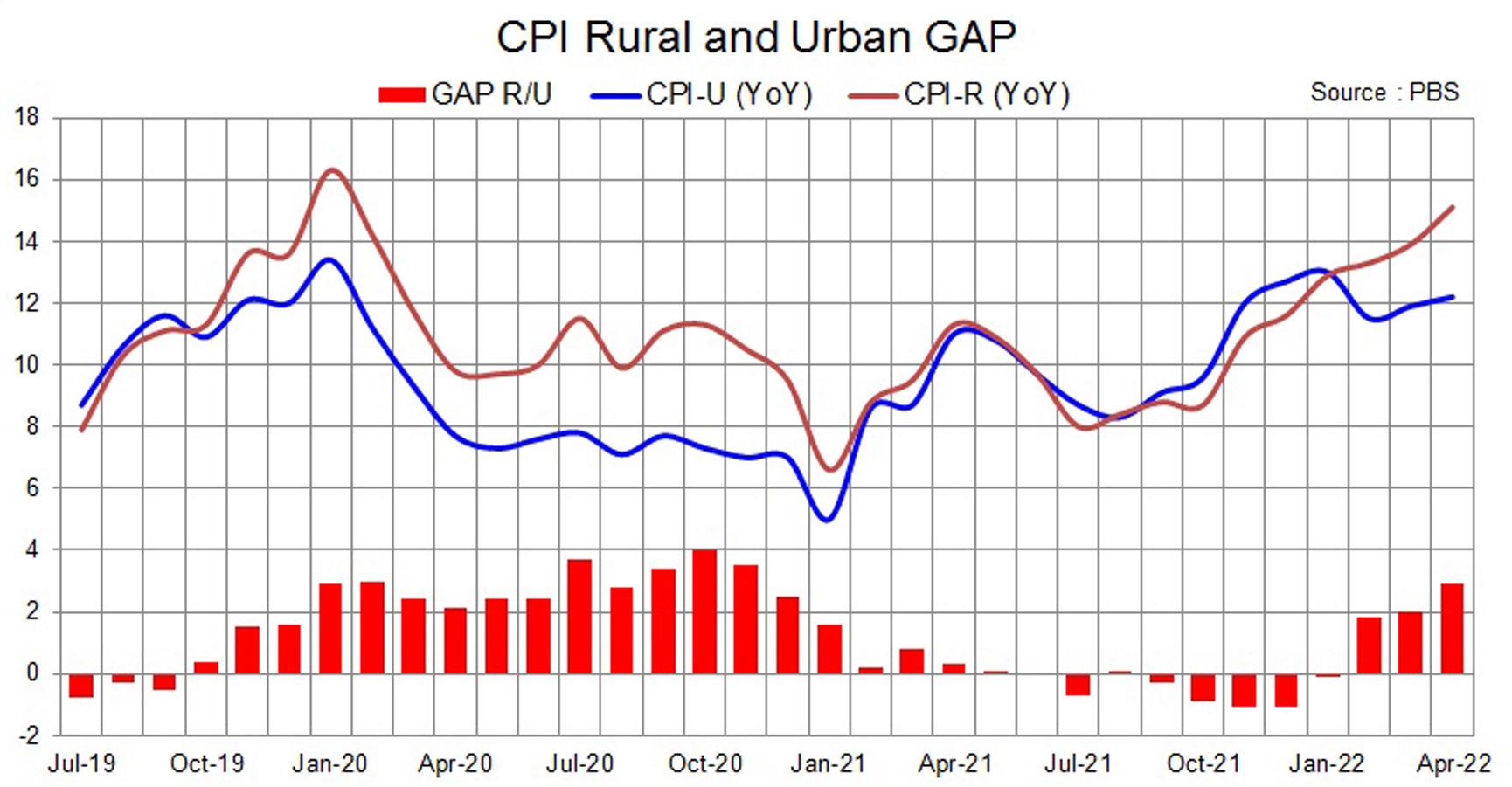Like heat wave, a fresh wave of inflation is hitting inhabitants of Pakistan hard. The headline number was recorded at 13.4 percent in April 22- highest since Jan-20. The increase is not just mere cost push (or due to food or fuel), the core inflation at 9.5 percent is almost at a decade high (highest since Feb-13).
The story doesn’t end here. The inflation by no means has peaked here. There is an inevitable increase in petroleum and electricity prices which would have direct and indirect bearings on the inflation. Then the upcoming budget would be reducing (some or all) of the remaining tax exemptions and perhaps imposition of some new taxes. Some of these would have inflationary consequences. Then there is no respite to global commodity super cycle, and there are spillovers of it in Pakistan’s inflation.

The headline inflation increased by 1.6 percent in April as compared to the previous month. It’s the food and that too perishable that drove the number – it’s the Ramzan effect. The government was in transition as there was not enough administrative check while there were other reasons for the hike. The smokers got a rare hit – cigarettes prices are up by 4.4 percent in the last month – probably the first increase in the last twelve months.
In food, tomatoflation is at the top – prices are up by 52 percent in a month. Onions are not far behind with 48 percent increase. Followed by fruits (21%) and vegetables (14%). Then cooking oil kept on increasing – up by 11 percent in a month and 60 percent in a year. Thanks to the rising palm and other cooking oil prices.

Tailoring prices increased by over 6 percent in a year. The profession seems to have passed on the impact of costs increase at the time of peak demand. The prices increased by 11 percent in the last 12 months. Then the motor vehicles prices are up by 5.4 percent in April on monthly basis and the yearly increase in 16 percent. This increase is much less than car prices increase which have ranged between 7 percent to 46 percent in the last six months.
Not every sub-index has increased. There is a decline in housing and utility sub index (second highest weight) – down by 0.7 percent in a month and on yearly basis the increase is mere 7.1 percent. On monthly basis, the decline is in electricity charges, liquified hydrocarbons and sold fuels.

Just to refresh the memories, government is running huge subsidies on petroleum and electricity prices, and these are keeping inflation in check – yet the increase is highest in two year and a quarter for headline and over nine-years in core inflation.
With an assumption of Rs30/liter average increase in petroleum prices and Rs5/unit on electricity prices, research houses are expecting inflation to peak at 16-18 percent in the next few months. The storm is yet to come. And the increase could be higher if the international commodity prices increase further.

And this increase is not a high base. Already, the headline inflation is at 13.3 percent. SPI at 14 percent and WPI at 28 percent. The impact is higher in rural areas where the inflation in April is at 15.1 percent versus 12.2 percent un urban.
Times are tough. And likely to remain tough. The SBP policy rate is at 12.25 percent while the market rates are approaching 15 percent. Writing is on the walls as inflation is likely to cross 15 percent in the next few months. Further rate hike is warranted- lets see how independent SBP would be under the new Governor.

























Comments
Comments are closed.